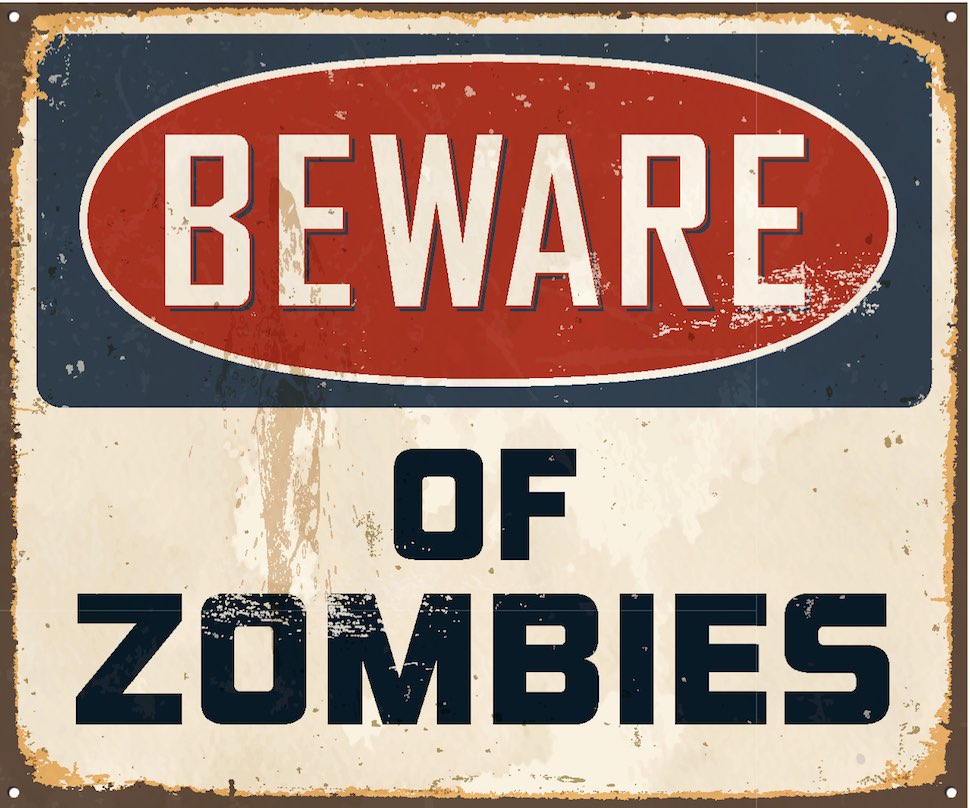Google Penalty Recovery Checklist: A Complete Guide [with PDF]
A Google penalty can be detrimental for your entire business. It can cause severe dips in rankings, significant loss of traffic, or even complete removal from Google’s index. If your website is a significant source of leads and revenue, a penalty can compromise your entire business model.
If you believe your site has been penalized by Google, it’s important to take steps toward recovery. Validate that traffic changes are the result of a penalty, determine what type of penalty has been applied, and take steps to get the penalty removed to recover lost traffic.
Don’t leave without downloading our exclusive Google Penalty Worksheet. Jump to the bottom to access the PDF.
What is a Google Penalty?
A Google penalty is a negative action against a website that is applied when the site violates Google’s quality guidelines or other suggested best practices. There are two types of Google penalties: manual and algorithmic/automatic. Common causes of a penalty include engaging in black-hat SEO techniques, or providing a poor user experience for visitors arriving from search.
Manual actions are issued when a member of Google’s spam team flags a site for violating the company’s webmaster quality guidelines. Algorithmic penalties occur when Google’s algorithm is updated to include new ranking factors, and a site suffers as a result.
Manual actions are issued for severe violations, and are extremely detrimental to rankings and traffic. Sites that have received manual actions can be demoted in search results or removed from Google’s index altogether. Google is very open about notifying site owners when a manual penalty has been issued. Notices are emailed to webmasters, and an alert appears when logging into Google Search Console.
Google is serious when it comes to issuing penalties. The company has even been known to penalize its own sites for violating quality guidelines.
Algorithm penalties can be caused by any number of factors, but Google is less forthcoming with information about algorithm updates. Often, suspicions of algorithm changes are met with the blanket statement that the company releases multiple changes each day. Google keeps many of its ranking factors private so as not to provide black-hat SEOs with the means to game the system.
Yes, we make changes almost every day.
— John ☆.o(≧▽≦)o.☆ (@JohnMu) March 9, 2017
we have 3 updates a day in average. I think it’s pretty safe to assume there was one recently…
— Gary “鯨理” Illyes (@methode) March 9, 2017
How to Get a Manual Action Penalty Removed
If you’ve noticed a sharp drop in rankings or traffic, your first step should be to check Google Search Console to see if a manual penalty has been issued. Within Google Search Console, expand the “Search Traffic” menu, and click “Manual Actions.”
If a manual action is listed, the next step is to learn more about why it was issued and how to recover. Google provides detailed information about manual actions on its support site, as well as the steps webmasters should take to recover.
There are several common reasons why sites are issued manual penalties:
- The site appears to have been hacked. If Google detects high levels of spam being added to a previously compliant site, it may issue a manual penalty and remove the site from its index to protect searchers. Enter the site URL into Is It Hacked? to determine if it’s been compromised. If so, take steps to secure and clean the site, or hire a professional to do it.
- There’s a significant quantity of user-generated spam. Spammers and bots frequently add low-quality comments to old blog posts. If you allow comments to publish without approval, and without a spamguard like Akismet, you may have a user-generated spam problem. Review comments and other user-generated content, and delete any entries that include questionable links or provide little value.
- The site has an unnatural link profile. This is typically caused by purchasing large amounts of low-quality links. To have this penalty removed, the low-quality incoming links must be removed or disavowed. Conduct a manual link audit, note any low-quality or irrelevant links, ask the respective site owners to remove the links, and submit a link disavow file for any sites you were unable to contact.
- Site content is low-quality. Content quality penalties are commonly issued when site content is scraped from other sources, created solely to earn affiliate or ad revenue, or stuffed with keywords in an attempt to earn higher rankings. Delete any scraped or plagiarized content, revise low-quality original content to add more value for users, and take time to create new, high-quality content.
- The site uses deceptive techniques. Some common deceptive techniques include cloaking (serving different content to users than Google), sneaky redirects (automatically redirecting users to a different page after they spend a few moments on the requested page), and misleading markup (marking up pages to earn unwarranted rich snippets). Any deceptive code should be deleted immediately.
It’s also important to note that enterprise-level company, or other high-traffic, sites with lots of user-generated content, will often see manual actions for spamming. Control it as much as possible, of course, but don’t stress out over it either. Google will apply a penalty to the individual page, but one action per three million users won’t hurt the site’s SEO efforts.
When absolutely certain that the factors that led to the manual action have been completely resolved, submit a reconsideration request to Google. Document the problem and the steps taken to resolve it in as much detail as possible.
If Google approves the request, the manual action will be removed, and the site will begin to recover from the penalty.
How to Recover from a Google Algorithm Penalty
Unfortunately, recovering from an algorithm penalty is less straightforward. You’ll have to perform some research, use your best judgement, and take steps to solve any problems.
But before assuming an algorithm update is the problem, consider if the problem is the result of an unrelated issue:
- Fluctuations in Content Promotion or Advertising – Have there been any changes in marketing or advertising campaigns that could have caused dips in traffic?
- Code Mistakes – Have developers changed robots.txt, redirect, or .htaccess files recently? It’s possible that an unintentional error is blocking search crawlers or users from accessing the site.
- Site Redesign or Migration – Has the site recently undergone a massive site redesign or restructuring? You may just need to wait for Google to crawl, index, and rank new pages.
- User Intent Fluctuation – Have you reevaluated user intent lately? Publishers in rapidly changing industries need to review user intent every six to nine months to make sure content still caters to searcher goals.
If the problem isn’t the result of these items, investigate possible algorithm penalties. The starting point for researching algorithm penalties is Google Analytics.
A loss of traffic caused by an algorithm change will have a specific time period when traffic dropped, followed by either sustained low traffic or continued traffic declines.
Find the date when the problem started, and look for evidence of an algorithm change on or near that date on Moz’s Google Algorithm Change History timeline. It lists confirmed and suspected Google algorithm updates, and provides links to articles that discuss what factors the SEO community believes were targeted by the change.
If Google has confirmed an update—or if SEOs have been discussing a likely update—that was released around the same time that the traffic issues began, take time to research the factors that were included in that update. For example:
- The “Fred” update, released in March 2017, is believed to have targeted sites with low-quality content that were more focused on earning ad revenue than providing value to users.
- The intrusive interstitial update, released in January 2017, was announced by Google and designed to reduce the ranking of sites that block access to content with popups, interstitials, and overlays after a page loads.
Review the date of the change and any details of what was impacted, and determine if your site violates any of the negative ranking factors created by the update. If so, take steps to get rid of those ranking factors.
For example, if the site was negatively impacted by the intrusive interstitial update, the first step to recovery would replacing intrusive interstitials with more acceptable alternatives.
How to Avoid Getting a Google Penalty
When it comes to Google penalties, the best defense is a good offense. If you’re actively avoiding black-hat techniques, adhering to Google’s webmaster quality guidelines, creating content for users instead of search engines, and monitoring announcements of changes on the Google Webmaster Central Blog, you’ll significantly reduce the likelihood of ever needing to recover from a penalty.
In the unfortunate circumstance that traffic drops and you suspect a penalty is the culprit, start by checking Google Search Console for manual actions. If that’s not the problem, consider other unrelated changes that may have caused traffic decreases. Finally, investigate recent algorithm updates to determine if there’s a connection between a suspected or confirmed update and traffic loss.
Take steps to recover from the penalty quickly, and then develop a good offensive strategy for avoiding penalties in the future.
What's Next?
Profound Strategy is on a mission to help growth-minded marketers turn SEO back into a source of predictable, reliable, scalable business results.
Start winning in organic search and turn SEO into your most efficient marketing channel. Subscribe to updates and join the 6,000+ marketing executives and founders that are changing the way they do SEO:
And dig deeper with some of our best content, such as The CMO’s Guide to Modern SEO, Technical SEO: A Decision Maker’s Guide, and A Modern Framework for SEO Work that Matters.




